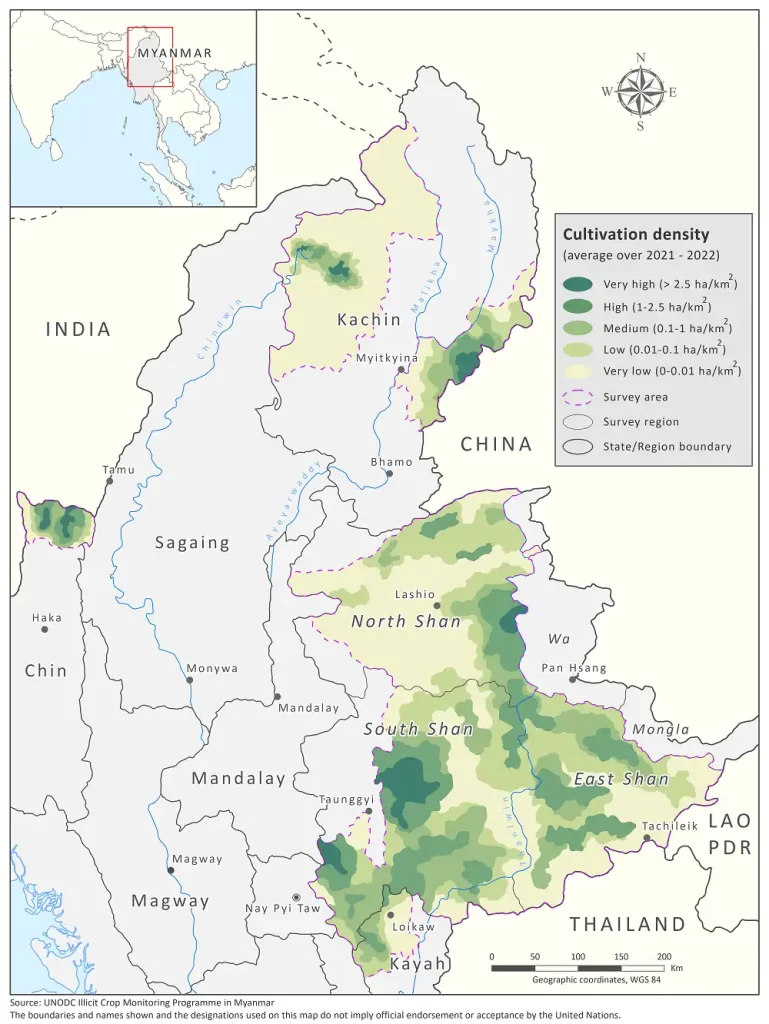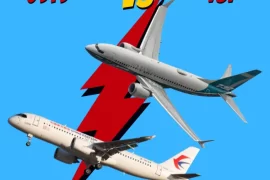
A recent United Nations Office on Drugs and Crime (UNODC) report (January 2023) revealed that Myanmar’s opium economy has been burgeoning since the military takeover of the country in February 2021. Opium cultivation in the war-torn country has also significantly increased, reversing the downward trend from 2014 to 2020.
It is noteworthy that Myanmar is the second-largest opium producer in the world, after Afghanistan.
A brief history of opium production in Myanmar
Opium cultivation in Myanmar’s northeastern region began at the initiative of Chinese traders from the neighboring Yunnan province of China around 1736. China used to be the sole market for Myanmar’s opium produces.
The use and production of opium in Myanmar reached a problematic level with the development of the international opium trade and the beginning of British colonial rule (1824) in the country.
The British government brought a policy change to curb opium use in Myanmar in 1878, but by that time, according to a British administrator, “opium has become the scourge of this country.”
The nationalist revolution in China in 1912 led to the prohibition of opium production, which subsequently swelled the number of Chinese opium growers in Myanmar.
Myanmar gained independence in 1948, but the opium problem persisted as the unification effort of the country failed to reconcile various ethnic groups. The separatist rebels of Myanmar’s prominent opium-growing regions such as Shan State and Kachin State turned to the opium trade to finance their war.
Since then, there has been a direct connection between opium cultivation, heroin manufacturing and the drug economy and conflict in Myanmar. The opium economy supports the conflict, and in turn, the conflict facilitates the opium economy.

Current production scenario
UNODC’s Myanmar Opium Survey 2022 shows an increase of 33% in cultivation area to 40,100 hectares and an 88% increase in potential yield to 790 metric tonnes since the military takeover. These figures indicate to the significant expansion of Myanmar’s opium economy.
Shan State saw the most significant increase where cultivation went up 39%, followed by Chin (14%) and Kayah (11%) states, while cultivation in Kachin rose a moderate 3%.
The average yield of opium has also risen 41% to a record high of 19.8 kg/ha (since 2002), pointing to an improvement in farming techniques and access to fertilizers.
Opium can be either consumed as raw opium or further processed into heroin.
There are three main factors that the conversion ratio of opium to heroin depends on: the morphine content of opium, the efficiency of traffickers to extract morphine from opium and convert morphine to heroin, and the purity of the heroin.
Opium market
Both raw opium and heroin reach the end-consumer markets both in and outside of Myanmar.
Myanmar is a major supplier of opium and heroin in East and Southeast Asia, as well as Australia. China continues to be the main market for Myanmar’s opium products.
Value of Myanmar’s opium economy
The expansion of the opium economy in Myanmar is correlated with the expansion of the heroin trade in the region. According to UNODC’s 2022 survey, the value of opium in Myanmar ranges up to US$2 billion, with the regional heroin trade valued at approximately US$10 billion.
Reasons behind the rise in opium production
UNODC Regional Representative Jeremy Douglas has identified a convergence of economic, security and governance disruptions following the military takeover of February 2021 behind the rise in opium production in Myanmar.
Farmers in remote often conflict-prone areas in northern Shan and border states have had little option but to move back to opium, he added.
Where does the solution lie?
Since the military coup, Myanmar’s economy has been going through a tough time due to a lack of stability, Western sanctions, and the withdrawal of investment by foreign investors.
According to World Bank’s Myanmar Economic Monitor (July 2022), 40 percent of the population was living below the national poverty line in 2022 which means that nearly a decade of progress on poverty reduction has been undone.
As a result, many urban citizens are now moving to rural areas and opting for opium farming, which is often considered to be the employer of last resort in Myanmar.
Therefore, the real solution includes a strong economy and creating viable alternatives to growing poppies for farmers and the under- or unemployed citizens.
However, without political stability, economic stability will be a mirage.







